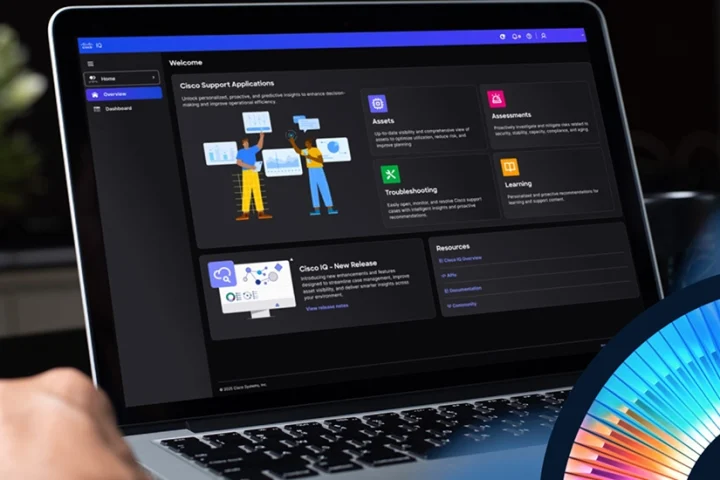Why channel partners hold the key to enterprise adoption of AI/ML.
According to Canalys, AI-powered business opportunities for channel partners are projected to reach $158.6 billion by 2028—spanning AI services, software development, and the resale of AI-driven products.
With this surge in demand, channel players such as VARs, SIs, distributors, MSPs are playing an increasingly strategic role in the adoption and scaling of AI/ML solutions—especially for businesses navigating new and complex technologies.
“Channel partners are vital in guiding businesses as they adopt and scale AI/ML effectively. Rather than simply implementing solutions, partners help businesses align AI strategies directly with core objectives, ensuring data is quickly accessible, securely managed, and updated in real time,” says Suresh Chandrasekaran, Executive Vice President, Denodo.
“AI—whether generative or machine learning-based—represents a major opportunity for channel partners,” adds Sébastien Ory EMEA VP Partners & Channels, AVEVA. “Many industrial companies don’t know where to start. This is where partners can co-define relevant AI capabilities, especially for small and medium-sized businesses, helping them extract value securely and efficiently from these technologies.”
Fred Crehan, Area Vice President Growth Markets at Confluent agrees, emphasizing the importance of real-world validation: “Channel partners are critical to helping enterprises bridge the gap between AI ambition and reality. The real opportunity lies in helping customers test AI under real-world conditions—and then scale fast.”
Beyond deployment, partners are central to the long-term success of AI strategies, notes Murat Atici, CEO, Bimser: “From identifying high-impact use cases and integrating solutions into existing systems, to managing change and providing ongoing support, channel partners help organizations move from pilot to production with confidence. They’re also instrumental in training teams and ensuring ethical, compliant AI usage—making them not just technology enablers, but strategic advisors in an AI-driven future.”
As businesses increasingly view AI and ML as strategic imperatives rather than just technology trends, channel partners have a unique opportunity to evolve from product resellers to trusted solution enablers and advisors. But this transformation requires more than just technical capability—it demands a shift in mindset, engagement model, and value proposition.
Sandeep Sapru, Director Partner Sales MEA at UiPath, highlights that automation is becoming a core business strategy, and this change calls for a new role for partners:
“Partners must move beyond transactions to become trusted advisors. This shift begins with expertise. Those who invest in continuous learning, stay ahead of product innovation, and embed themselves within customer ecosystems are best positioned to lead with value.”
In today’s competitive landscape, sector-specific messaging also matters.
“Partners need to sharpen their messaging by articulating how AI solutions deliver industry-relevant outcomes. In sectors like retail, for example, AI is improving demand forecasting, inventory management, and returns processing—creating measurable efficiency gains,” Sandeep adds.
Mayuresh Kothari, Advisory Solution Principal at Secureworks, a Sophos Company, echoes this sentiment, noting that businesses today are looking for more than just technology deployment:
“Customers are seeking value-added services that ensure ongoing optimization. Partners who can deliver this will truly benefit. Moving the conversation from a purely technical transaction to a business-focused dialogue is essential to staying relevant and valuable.”
Ramprakash Ramamoorthy, director of AI research, ManageEngine, points out that the AI disruption is challenging traditional partner models, forcing a rethink: “Channel partners are being pushed to rethink how they can implement AI by understanding the nuances of each customer. A consultative approach is key. By examining a customer’s ecosystem and operations, partners can identify friction points that AI is well-positioned to solve.”
According to Ramprakash, one of the critical enablers of this shift is a blend of deep domain expertise and technical understanding.
“Rather than offering broad, horizontal AI solutions, partners should focus on specific enterprise operations and craft tailored use cases. This approach allows them to become true solution architects who can guide businesses through real transformation.”
Are there specific industries or verticals where partners can create the most value with AI-driven offerings?
AI is a horizontal opportunity—but the verticals you know best are where you’ll win. Unlike past tech waves like cloud, AI adoption is moving rapidly across sectors, as the risk of falling behind has become too high.
Fred from Confluent suggests that, rather than chasing new markets, partners should double down on industries where they’ve already built credibility.
“The real differentiator isn’t access to AI tech—it’s the ability to understand the customer’s pain points and map them to meaningful, scalable use cases. Whether it’s predictive maintenance in manufacturing or intelligent personalization in retail, trusted advisors who speak the language of their industry will always stand out.”
Atici from Bimser agrees, emphasizing that channel partners can create the greatest value in industries where data is abundant and operational complexity is high—such as manufacturing, healthcare, finance, and logistics.
“These sectors are primed for AI to solve real-world challenges, from fraud detection to process automation. Partners who combine deep domain expertise with technical capability can design AI solutions that not only fit the business context but also deliver measurable outcomes.”
What kind of training, tools, or partnerships do channel players need to successfully sell and support AI/ML solutions?
Sandeep from UiPath notes that basic knowledge of AI is no longer enough.
“Successful partners develop hands-on fluency through continuous training, applied learning, and ecosystem engagement. Workshops, model integration courses, and peer forums help them deepen their technical skills and stay responsive to change.”
Denodo’s Suresh highlights the importance of targeted learning and enablement tools.
“To sell and support AI/ML effectively, partners need both vertical-specific training—like AI for utilities or manufacturing—and horizontal skills such as customer service automation. Just as essential are practical tools, including SDKs, sandbox environments, and interactive platforms for hands-on experimentation.”
Sébastien from Aveva stresses the need for a platform-first mindset: “Channel players must adopt a digital platform mindset. This is where AI implementations make the most sense and deliver the most value. Given the pace at which AI is evolving, partners must stay continuously up to date to offer their customers flexible and future-ready solutions.”
What business models—such as AI-as-a-Service or consumption-based pricing—are opening up new revenue streams for partners?
As AI adoption matures, the channel is shifting from transactional sales to more outcome-driven business models.
Ramprakash points out that AI isn’t a one-time investment; it’s a journey.
“Enterprises lacking in-house AI expertise are increasingly turning to managed service providers who can create custom solutions, integrate them into existing ecosystems, and manage them throughout their lifecycle.
AI-as-a-Service (AIaaS) reduces upfront infrastructure and talent costs, while consumption-based pricing encourages adoption by aligning payments to actual usage—making it easier to scale and adapt.”
Mayuresh from Secureworks adds that while not all GTM strategies will be universally applicable, new opportunities are emerging fast.
“Data monetization—using pre-built, AI-ready datasets—may gain traction quickly but requires significant preparation. AI-powered workflow automation will serve as low-hanging fruit, especially in industries facing talent shortages.
However, the real long-term value lies in augmenting existing products and services. This improves cost efficiency, broadens market reach, and drives greater adoption of already-deployed technologies. Ultimately, success will come to those partners who can identify the problems AI can solve—and deliver solutions that produce tangible, AI-driven outcomes.”

























